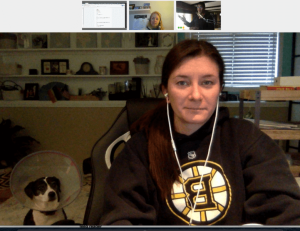
I just got a call from a senior leader: A community outreach staffer was causing his management team some consternation. When he was hired 18 months ago, he’d approached every job with zest, volunteered for extra responsibilities, and was considered a standout contributor.
But he no longer seemed as engaged, committed, or happy. Unfortunately, he was behaving as if he were being compensated purely for task accomplishment rather than for creating a consistent and forward-looking community presence.
Although one of his most important responsibilities was direct customer interaction at community events, he had begun arriving just in time for his formal duties and leaving immediately afterward instead of mingling and chatting, serving as a listening post, and deepening relationships.
Explore Under the Tip of the Iceberg
If new hires seem great right out of the gate but then somehow slip to being not so hot, regardless of their personal responsibility for good job performance, at least some of the fault for their downward shift falls to management or overall work structures.
In this case, after probing the management team, I learned the following:
- The staffer had never had responsibilities like these before.
- His immediate supervisor had assumed that he understood his responsibilities, and therefore hadn’t been explicit or directive about expectations or requirements. Nor had she been giving him prompt feedback on his performance.
- A senior colleague he admired had felt unappreciated and left the organization for greener pastures.
- His commute had turned out to be more draining than anticipated.
- One of his most visible responsibilities was inviting community members to events. Turnout had been less robust than he had expected, so he felt frustrated and was blaming the community for not participating more.
- He had been hired at a time of organizational need thanks to his technical skills and availability, and there hadn’t been any formal integration of his personal goals with the organization’s.
Get Everyone Back on Path
Unfortunately, natural talent and positive inclinations aren’t enough in today’s complex workplaces. It’s the supervisor’s job, even more than the employee’s, to notice when someone’s performance is off course. Merely telling the employee who’s off-track to return to what worked before may not help.
I encouraged the senior leader to work closely with the outreach staffer’s supervisor to ensure that she understood her responsibility for her subordinate’s performance, and to help her work with him to accept his own goals and responsibility for meeting them. Specifics included:
- Acknowledging that he’s gotten off course and that she hadn’t taken prompt action to get him back on track: “I should have spoken to you right away when I noticed that you had stopped doing this, or started doing that, and explained the connection to our larger success.”
- Asking if anything had changed for him about the job, the community, or the management relationship — and listening, listening, listening to his response: “Has something changed for you about the way you see and feel about the job? Because that’s what it seems like when you do X, Y, Z instead of A, B, C, as you used to do. Can you tell me about that?”
- Reinforcing the organization’s mission, goals, and philosophy, and making clear to the staffer how and why his work matters to the organization and the community
- Helping him see how his performance affects the organization’s success and customer satisfaction
- Asking him to recommit to his responsibilities and work with the community in positive ways: “Would you be willing to try doing such-and-such?”
- Checking back with him frequently to assess his accomplishments and satisfaction as well as verify he’s on a successful trajectory: “How about we go together to the next event, and we can try out some new positioning?”
- Making sure he’s getting consistent positive attention for all his positive actions
- Recognizing whether his goals and the organization’s goals are congruent, and if they can’t be reconciled, finding a graceful exit for him.
What will happen next? The management team isn’t sure. Over the next few months they’ll have to see if the supervisor can be more connected, more developmental, and more inspirational — and whether the employee is still emotionally available to reengaging.
Business & Finance Articles on Business 2 Community(33)
Report Post






